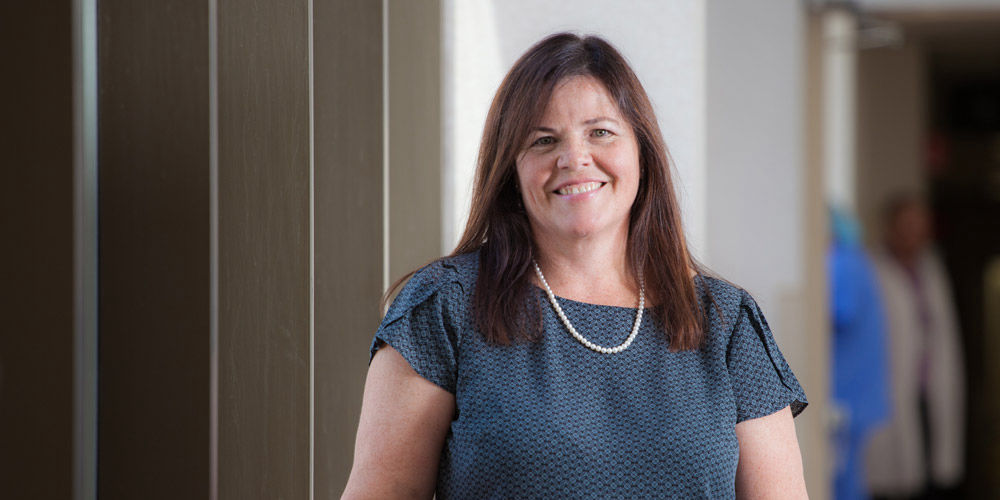It Starts By Asking
1. When did the pain start?
A patient’s history can reveal far more than just asking how they feel today. A deeper understanding helps define a more targeted plan of action.
2. How can we make this easier?
Patients are often overwhelmed by a provider’s recommendations. Breaking things up into smaller steps can empower a patient.
3. What went well this week?
Celebrate the minor victories that help patients feel like they’re moving toward a specific goal—and like they have the tools to keep going.
edical professionals know that patients need to be validated. But sometimes just being heard isn’t enough. It’s one thing to listen to someone say, “I have a headache.” But a cumulative picture tells a very different story.
When we delve into their family history—the stories about headaches that started at age 6 or the activities they missed in high school—that demonstrates that I value their time (and the time they spent waiting to see me).
Only 11% of visits that result in a headache diagnosis have “headache” attached as the primary reason for the visit. There’s an examination, imaging, and blood work. But the patient’s story and history is the most important piece of a diagnosis—and a plan of action. You might not be a specialist, but all of us have listening skills.
1. Ask an open-ended question–and then let them speak
A patient’s history is their story. We sometimes think that telling the story is simple, but it can be overwhelming for the patient. When I take a headache history, I’m not talking about the headache they are having today. Sometimes patients cry because they can’t believe they get enough time to tell their story. Sometimes they are frustrated because I call them out. It’s not all sunshine and roses.
It’s about trust. When the patient feels heard, trust is built. The fact that I heard them and have ideas for them makes them more willing to trust my recommendations and follow through.
Ask the patient to identify where (in their life) their pain started. With that thoughtful exercise, you may have a different dialogue because you’re expressing interest in where the patient is actually coming from. If you don’t take that time up front, you may never get to the next part of a successful treatment.
I think we assume that patients are essentially mentally well. Not talking about the psychological pathology that leads to a physical complaint doesn’t result in improvement for the patient. Sometimes chronic illness starts in a different place in our brain.
2. Explain the stepping stones in treatment
Sometimes the plan of action isn’t going to be medication. Sometimes it’s going to be lifestyle-related. That may not feel great to someone who said, “I waited six months for you to tell me to get off the couch?” But just responding with, “OK, here are some drugs” when a patient says, “I have a headache on my right side and think it’s a migraine” is how people end up on medications that don’t necessarily help them. It’s just a Band-Aid on the wound.
I think of a recent patient: a teenager who has a dysautonomic disorder. If she gets up too quickly, she gets a head rush. She’s trying to do rehab, but she hasn’t been able to attend school full-time. And once she gets to school, the social engagement is challenging enough that she is too tired to do the rest of her training.
I proposed some small changes. I said, “Why don’t we start with two minutes on the bike in the morning when you’re first awake and fairly refreshed? That way you can get a little cardio in before you even hit the books. Then, when you come home, don’t worry about cardio; maybe do some strength and core workouts.” We’re trying to identify her plan of action—but also why she might think it’s insurmountable.
Patients get overwhelmed. Anxiety is incredibly common. If somebody is anxious, they won’t do their 30 minutes of cardio. But if you start with two minutes, then increase to three minutes the next week, you start on that very long journey. This patient’s mother recently told me, “Coming to this clinic is the first time we have ever made progress.”
3. Recognize the small wins
It’s a good day when maybe half of my patients recognize change or improvement as part of their treatment plan. Maybe they finally have an “Aha!” moment where they say, “I can go to the game with my kid now; I have the right rescue plan that I never had before.” Or, “I don’t worry about not traveling anymore—now I can handle it.” A good day is seeing patients understand that the tools have been there all along—maybe they just didn’t know how to use them.
*Originally published December 1, 2017
Susan Baggaley
Health care is full of high emotion—especially right now. Thankfully, there’s a simple framework we can follow to de-escalate with compassion. Hospitalist and UACT co-director Claire Ciarkowski introduces NURSE: a simple mnemonic for responding with empathy.
M.ED host Kerry Whittemore sits down with Stephanie Lyden, a stroke neurologist and telemedicine champion, to discuss how to overcome the challenges of telemedicine to have the best virtual encounter, as part of the Medical Education for the Practicing Clinician podcast series.
M.ED host Kerry Whittemore sits down with Stephanie Lyden, a stroke neurologist and telemedicine champion, to discuss how to overcome the challenges of telemedicine to have the best virtual encounter, as part of the Medical Education for the Practicing Clinician podcast series.
